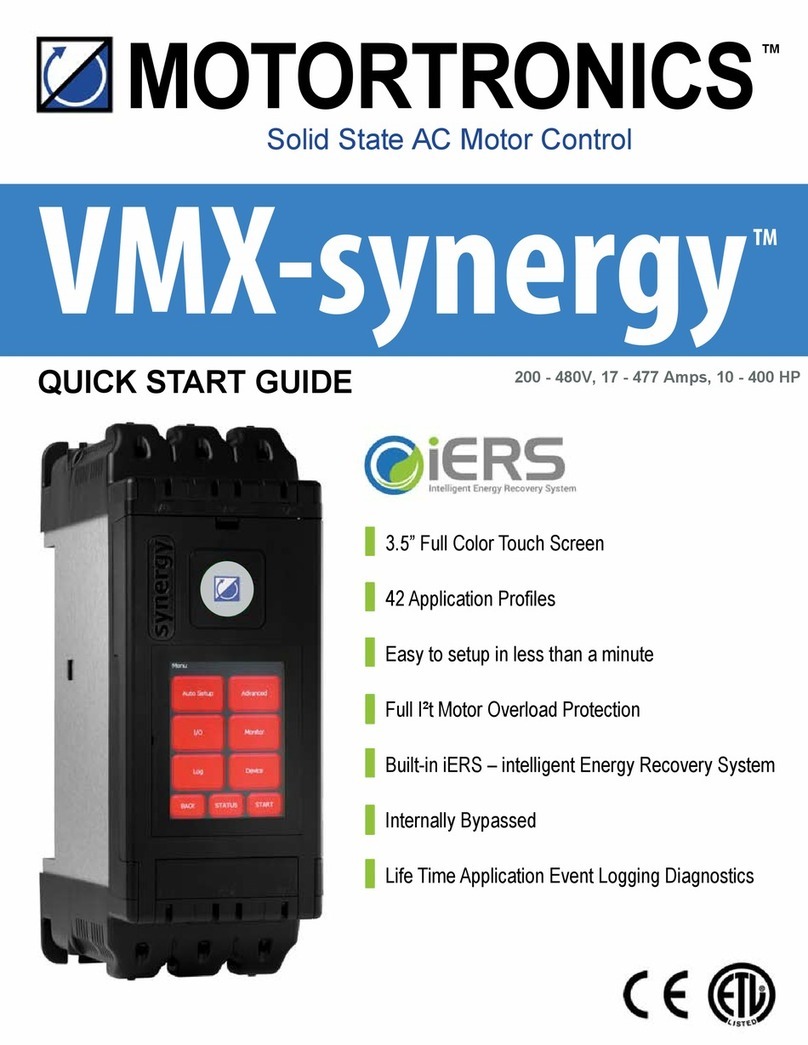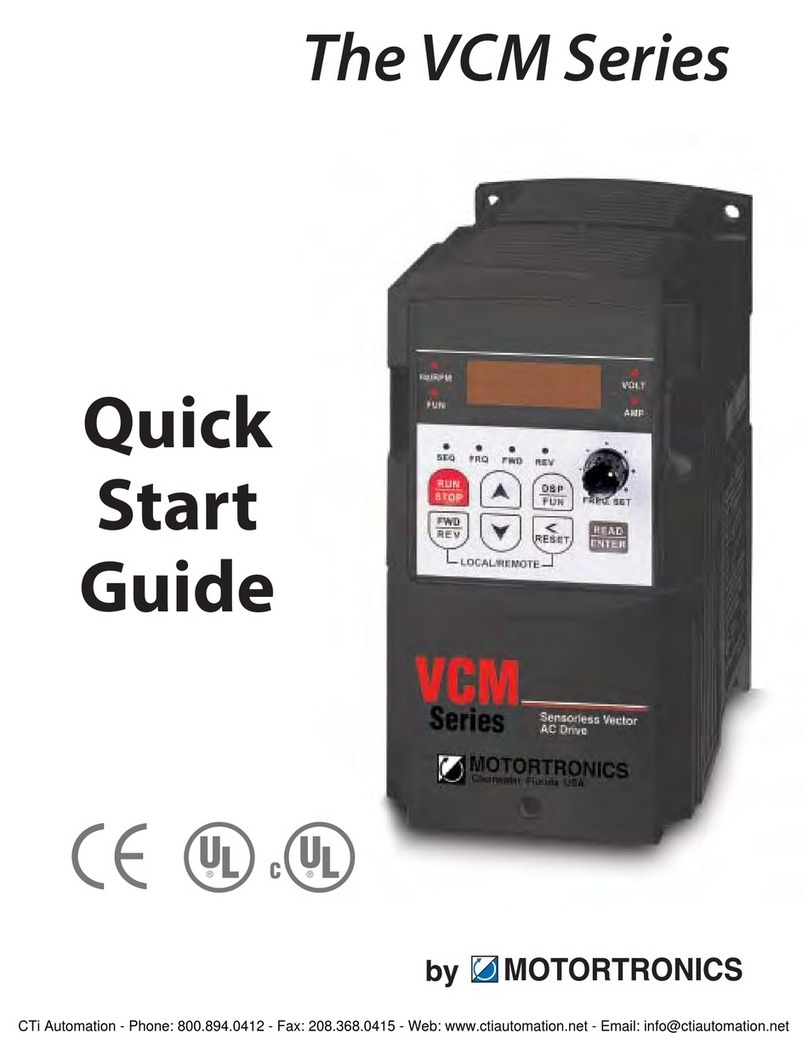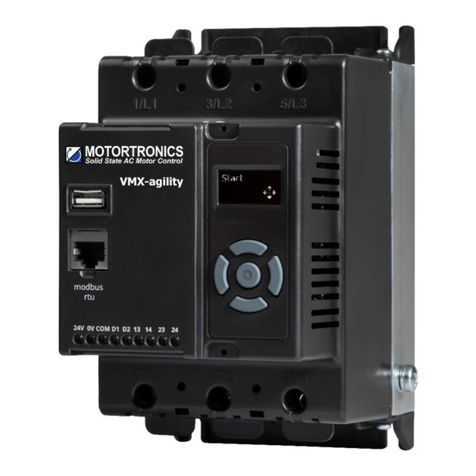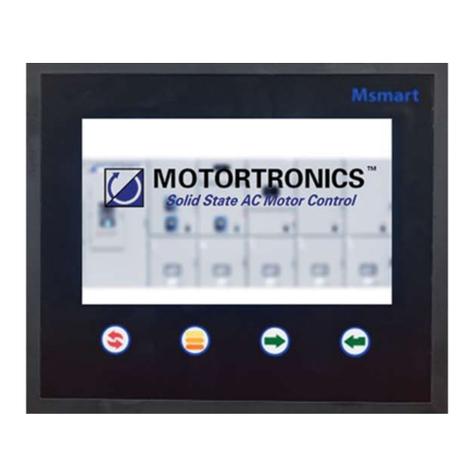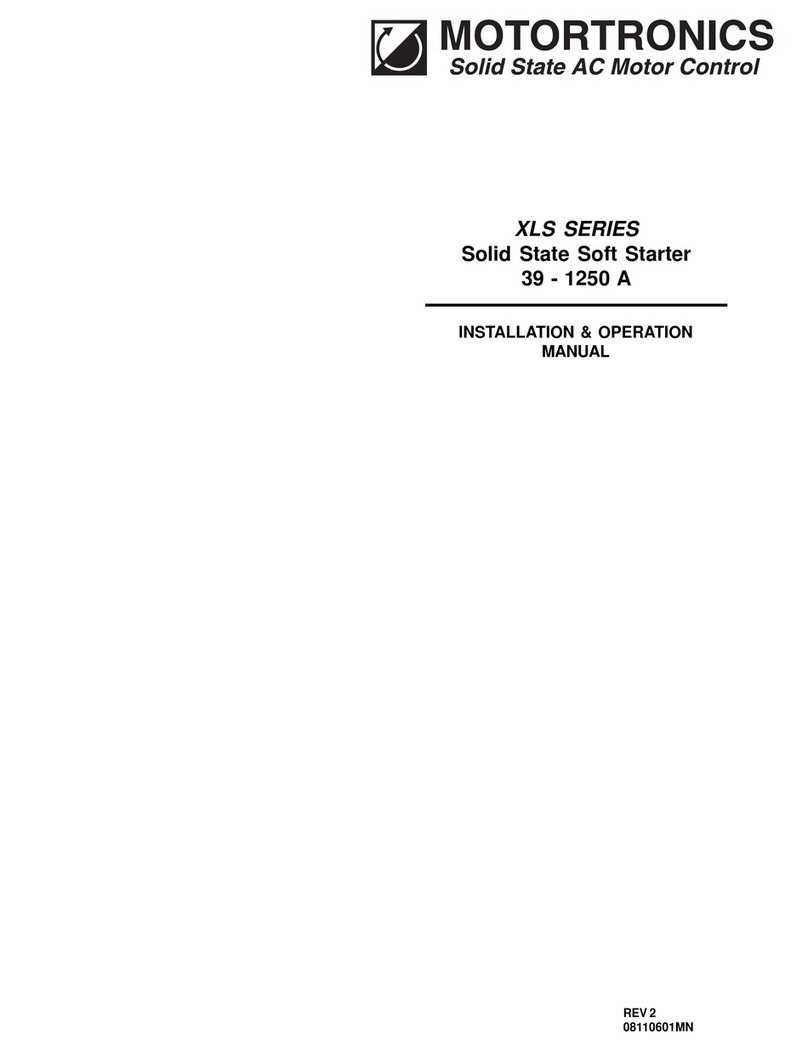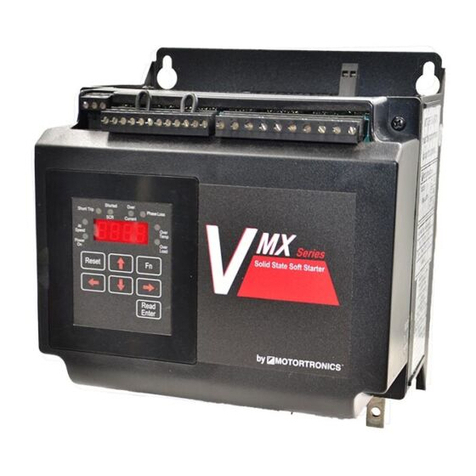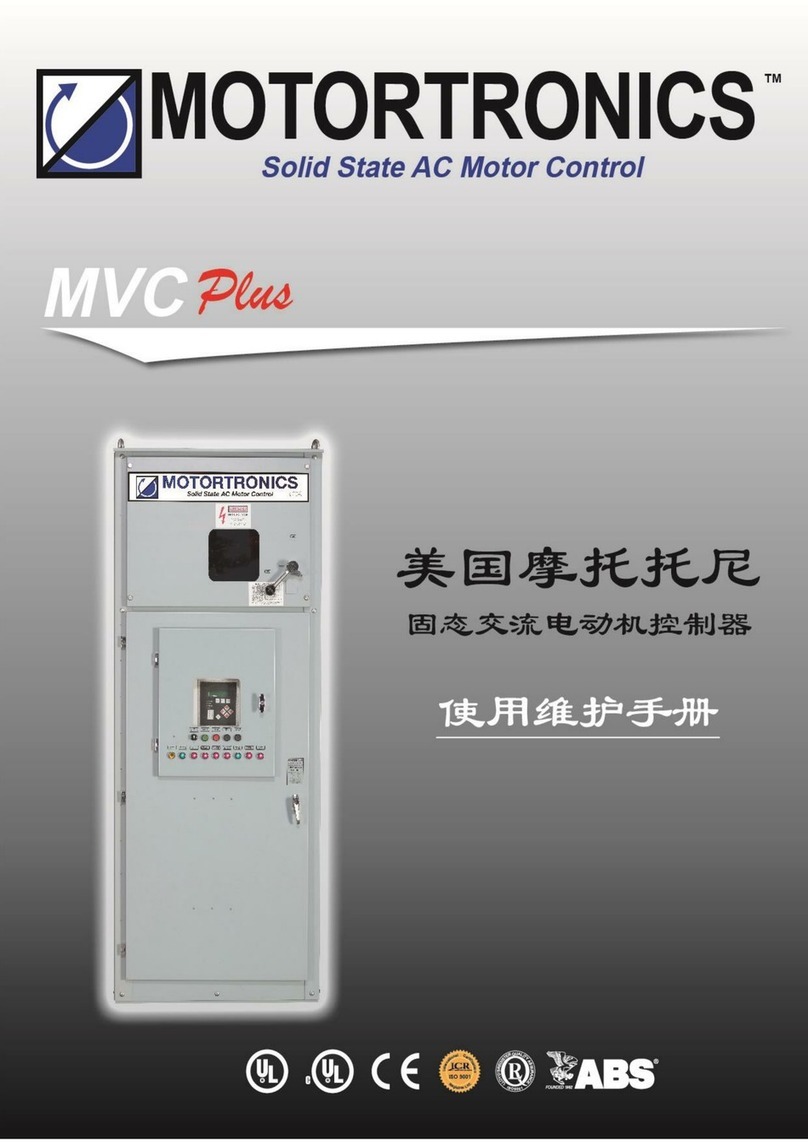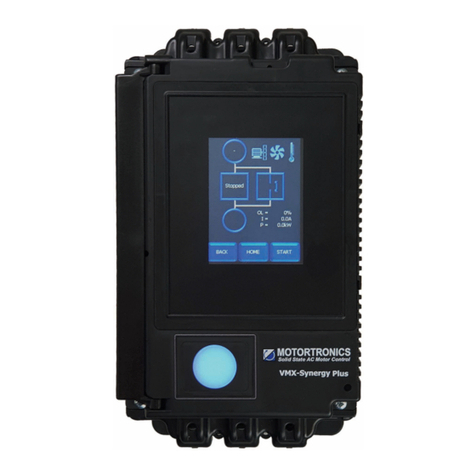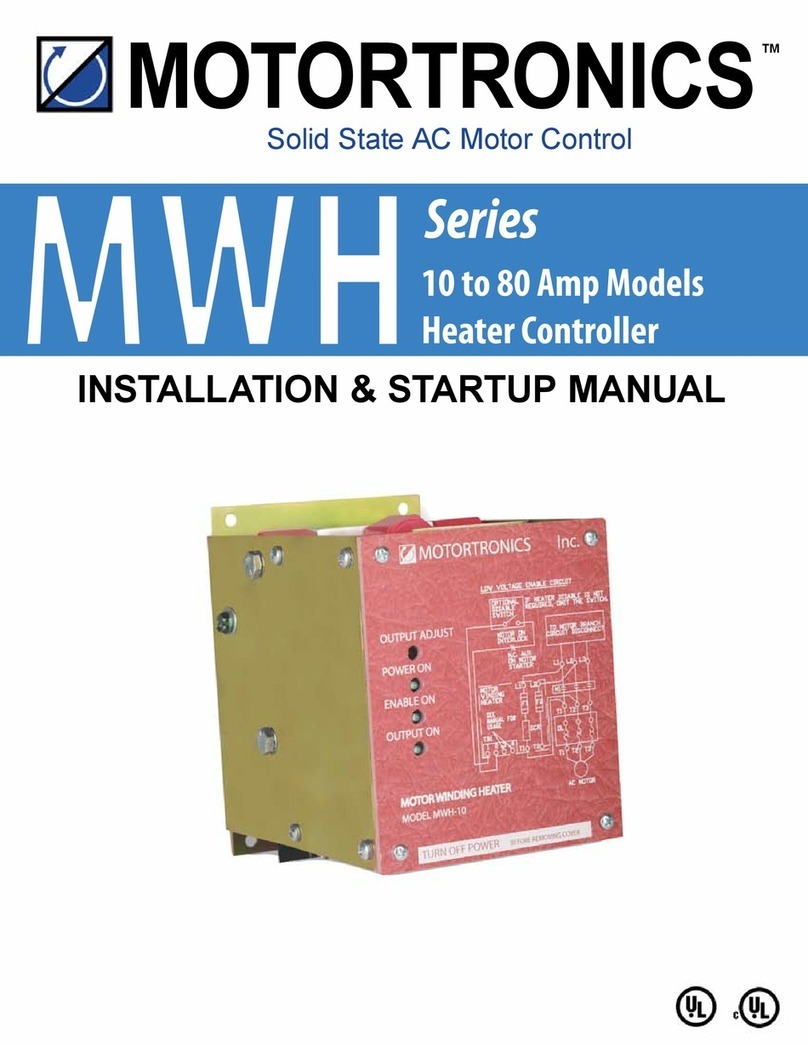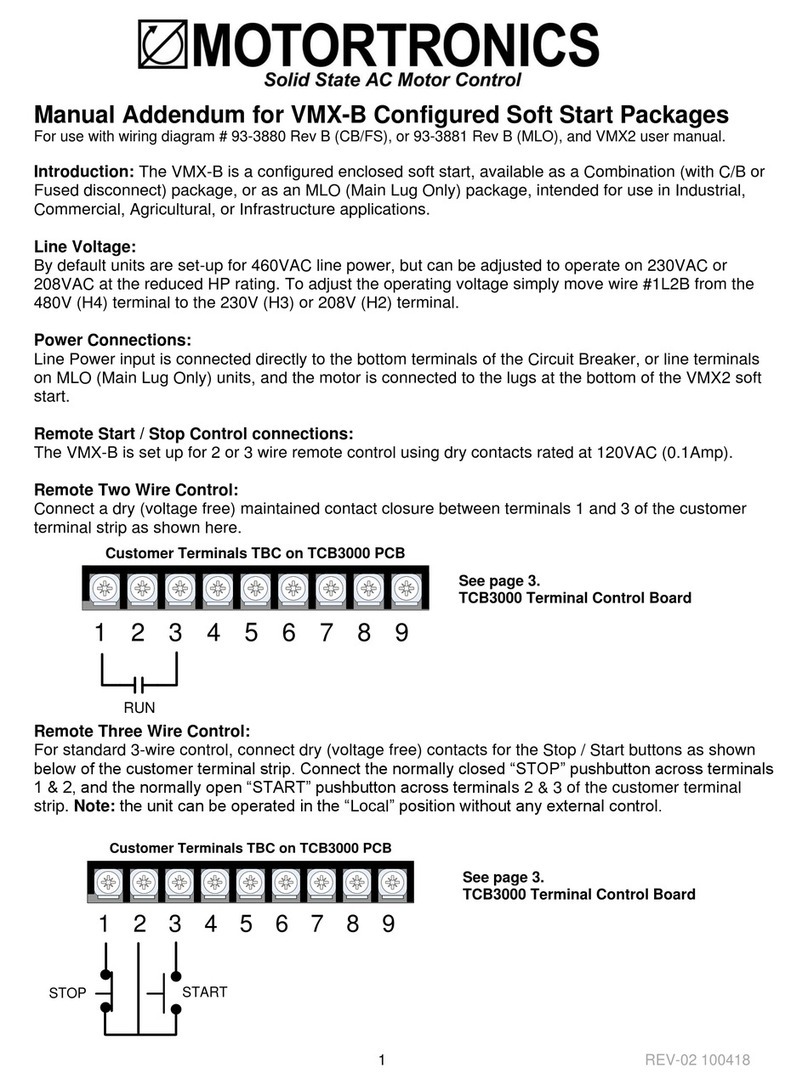
Basic Installation and Operation Guide VMX Series Digital Solid State Soft Starters 18 – 1000A
Page 8 of 27
Chapter 2 - Installation
Receiving and Unpacking
Upon receipt of the product, you should immediately do the following:
Carefully unpack the unit from the shipping carton and inspect it for shipping damage (if damaged, notify the
freight carrier and file a claim within 15 days of receipt).
Verify that the model number on the unit matches your purchase order.
Confirm that the ratings sticker on the unit matches or is greater than the motor’s nameplate Full Load Current
(FLC or FLA) rating and Service Factor (if used).
Choosing a Location
Proper location of the VMX Series is necessary to achieve specified performance and normal operation lifetime.
The VMX Series should always be installed in an area where the following conditions exist:
Ambient operating temperature:
Panel (open chassis) unit: 0 to 50°C (32 to 122°F)
Enclosed unit: 0 to 40°C (32 to 104°F)
Protected from rain, moisture and dust. Enclosed units should not be exposed to direct sun.
Humidity: 5 to 95% non-condensing
Free from metallic particles, conductive dust and corrosive gas
Free from excessive vibration (below 0.5G)
Open panel units must be mounted in the appropriate type of enclosure. Enclosure size and type must be
suitable to dissipate heat generated by the soft starter and any other components mounted inside with it.
Units with –BP Bypass Contactors produce less heat than units without. Throughout all sizes, maximum heat
dissipation of the VMX…-BP Series electronics, contactor coils and fans is less than 50W.
Units without the –BP Bypass Contactor (optional on 210A and above), must have ventilation adequate to
account for heat dissipation of the SCRs. This must be estimated at 4.5 watts per running load amp. For
example, on a 200HP 460V motor with 240FLA, the maximum heat dissipation of a starter w/o bypass will
be 240 x 4.5, or 1080 watts of heat. Enclosure ventilation (or air conditioning) must be capable of dispersing
this amount of heat.
Care should always be taken to maximize the available space inside of the enclosure. See “Clearances” below
or contact factory for assistance in sizing enclosures.
Initial Unit Inspection
Make a complete visual check of the unit for damage that may have occurred during shipping and handling. Do
not attempt to continue installation or start up the unit if it is damaged.
Check for loose mechanical assemblies or broken wires which may have occurred during transportation or
handling. Loose electrical connections will increase resistance and cause the unit to function improperly.
Mounting and Cleaning
When drilling or punching holes in the enclosure, cover the electrical assembly to prevent metal filings from
becoming lodged in areas which can cause clearance reduction or actually short out electronics. After work is
complete, thoroughly clean, vacuum the area, and re-inspect the unit for foreign material.
SERVICE WARNING!
Do not service equipment with voltage applied! The unit can be
the source of fatal electrical shocks! To avoid shock hazard,
disconnect main power and control power before working on the
unit. Warning labels must be attached to terminals, enclosure and
control panel to meet local codes. Use Lock Out tags such as the
one shown when servicing equipment.
Phone:
800.894.0412
-
Fax:
888.723.4773
-
Web:
www.clrwtr.com
-
Email:
[email protected]